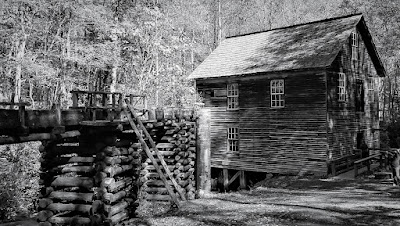The Andrews Raiders Monument, erected by the state of Ohio in 1890, is among the most unique memorials in the cemetery. The granite base and die is topped with a bronze replica of “The General,” the Civil War-era wood-burning locomotive famous for its great chase of 1862.
Friday, February 18, 2022
2020-10-18: Westbound Roadtrip Through North Carolina and Tennessee
The Andrews Raiders Monument, erected by the state of Ohio in 1890, is among the most unique memorials in the cemetery. The granite base and die is topped with a bronze replica of “The General,” the Civil War-era wood-burning locomotive famous for its great chase of 1862.
Saturday, February 12, 2022
2020-09-20: Walking Around the Historical Augusta, Georgia and Finding a Few Geocaches
Augusta thrived as a trading post from the beginning, with several of the South Carolina traders moving their base of operations to the new settlement. By 1739 a fort was completed, and the official surveyor of the colony, Noble Jones, laid out the town. Its colonial plan was similar, but not as elaborate as the one used in Savannah. Augusta’s plan focused on one large square or plaza and was four streets deep and three streets wide. Fort Augusta was adjacent to the 40 town lots on the west side near the river. Augusta named two of its original streets for Georgia’s colonial governors: Reynolds Street for John Reynolds, and Ellis Street for Henry Ellis. These streets are still prominent features of the Downtown Augusta, Broad Street, and Pinched Gut Historic Districts.
As traders populated the town, they brought their wives and began to have children. The desire for a more civilized atmosphere dictated the need for a church. As a British colony, Georgia petitioned the Society for the Propagation of the Gospel for a minister after constructing a church building in 1749. The first minister, the Reverend Jonathan Copp, arrived in 1751 and began conducting services according to the rites of the Church of England. After Georgia’s division into parishes in 1756, the Augusta District fell into St. Paul’s Parish, and the Augusta church became known as St. Paul’s Church (GC7B87M).
After the Revolution Augusta became the temporary capital of the new state of Georgia between 1786 and 1795, and many of the leaders of the government moved to the town. One of the most notable was George Walton, a Signer of the Declaration of Independence, who built his home, Meadow Garden, on what was then the outskirts of town. The other of Georgia's Declaration of Independence signers, Colonel William Few Jr, was buried at the St Paul's Cemetery in 1828.
As Georgia expanded westward and the states of Alabama and Mississippi attracted many of its prosperous planters, Augusta’s economy began to stagnate. The Charleston and Hamburg Railroad in South Carolina reached a point directly across the Savannah River from the heart of downtown Augusta in 1832. In 1833 the Georgia Railroad, chartered in Athens, Georgia, began building westward from Augusta toward a yet unnamed settlement that would eventually become Atlanta.
The railroad did not ensure Augusta’s future, as the tug on Americans to move westward grew ever stronger, but other factors had a positive impact on the city. Spurred by the invention in 1793 of the cotton gin, local farmers grew upland cotton in the surrounding countryside making Augusta the center of a large inland cotton market.
Augusta served as a major center of the Confederacy, providing cotton goods, shoes, guns, munitions, food, and many other commodities. In addition, the city was a religious center of the South hosting meetings for the formation of both the Protestant Episcopal Church in the Confederate States of America at St. Paul’s Church, and the Presbyterian Church in the Confederate States at First Presbyterian Church. The meeting took place there at the invitation of its pastor, Reverend Joseph Ruggles Wilson, who lived with his family in the parsonage, the Woodrow Wilson Boyhood Home.
While there is much more that can be said of Augusta's history and many more places to see, we still have a long drive ahead of us to the RV park in North Carolina. So let us get back on the road for now. Until the next time...
Friday, November 26, 2021
2020-06-04: More Geocaching Through the Backroads of Georgia Counties and a Confederate P.O.W. Camp
Saturday, November 20, 2021
2020-06-03: Another Geocaching Roadtrip Through the Backroads of Georgia
The following morning the president’s party crossed the present Highway 341 at approximately where Friendship Baptist Road is now. They followed this route to what is referred to as 5 points. Further along Friendship Baptist Road they would come to Levi (Tiger Bill) Harrell’s farm where they stopped for the noon meal. Turning south, they passed through what is now Rhine and then west to the river.
Mrs. Davis was to remain behind and follow the next day. Fearing the roads would become impassable due to the heavy rains that had started to fall would heighten the chances of Mrs. Davis’ capture, Preston Johnson returned to the campsite to inform Mrs. Davis to leave immediately and join her husband in Abbeyville.
Many have pondered why the Davis’ didn’t stay in the Parkerson Church located just across the swamp. The Parkerson Church is the one of the oldest churches in Dodge County having been built in June 1831. (Dodge County being Pulaski and Telfair Counties at that time.) The original building was a log house built by Jacob Parkerson, a Revolutionary War Veteran who donated the land and the first to be buried here in 1843.































































